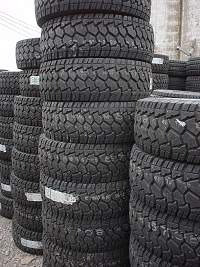Exasperated by his inability to find new tires for his truck, owner-operator Joe Marra reached out to the ExpeditersOnline.com community in September.
Exasperated by his inability to find new tires for his truck, owner-operator Joe Marra reached out to the ExpeditersOnline.com community in September. “What’s going on?” he asked his colleagues in the online forum, “I have been trying to buy four drive and two steer tires for a couple of days now. I cannot find what I am looking for… I have talked with 14 different tire outlets”. Stating the obvious, Joe went on to say, “This kinda [SIC] sucks. I need tires.”
What’s going on worldwide is a shortage of natural rubber that is used in making truck tires, and increasing demand for tires and rubber products of all kinds. With the supply of natural rubber decreasing and tire demand increasing, truck tire prices are skyrocketing and the tires themselves are getting harder to find. These conditions are expected to persist for years.
Natural rubber is made from sap which is tapped from rubber trees. Over ninety percent of the world’s rubber trees are grown on plantations in Asia where the climate and soil are favorable. A new rubber tree must grow for seven years before it enters its 25-30 year productive phase. Old trees are uprooted and new ones are planted to begin the cycle anew.
Developments that have tightened the supply of natural rubber include:
Rubber tree acreage is decreasing. Economic growth in countries where rubber trees are grown is making land more valuable, creating incentives for plantation owners to give their land over to more lucrative endeavors. Sharp price increases prompt growers to over tap their trees, damaging them and reducing future production. The age structure of rubber trees has been disrupted by demand declines during the Great Recession and now by sharply higher natural rubber prices. Older trees are kept in production beyond their prime, keeping newer trees from being planted in their place. Drought and too much rain in recent seasons have reduced output. Household incomes are rising in developing countries, prompting increasing demand for consumer goods. More people worldwide want rubber products than ever before. Even though the price of natural rubber has increased 260 percent in the last two years, supply is not forecast to keep pace with demand. Jom Jacob, a senior economist at the Association of Natural Rubber Producing Countries expects natural rubber supplies to remain tight through 2018. Tight supply has attracted new interest in the commodity by speculators. A decline in the performance of other asset classes has prompted futures traders to look elsewhere for higher returns. Their presence in the natural rubber market increases price volatility, which changes the behavior of producers (over-exploiting trees, stockpiling product, disrupting planting cycles).
Petroleum-based synthetic rubber is an alternative, but truck tires require more natural rubber than automobile tires. About 60 percent of all rubber production today is synthetic. While most tires include a blend of natural and synthetic rubber, synthetic rubber is less suited for heavy duty use, as with a truck tire. The more heavy duty the application, the more natural rubber is used.
Rubber is just one of many components used in making truck tires. When announcing price increases, manufacturers speak mostly of increasing raw materials costs, but decreased manufacturing capacity (Japan’s tsunami) and rising production and transportation costs are factors too.
Politics has also affected tire prices and availability in the U.S. In a bid to protect American jobs, President Obama imposed a tariff in 2009 on tires made in China. The temporary, three year tariff began at 35 percent and declines five percent a year until it ends in 2012. With 2012 being an election year, it is unknown at this point if the tariff will be reinstated.
Back to where the rubber literally meets the road, Joe was able to find tires for his truck, but not in his brand of choice. Kyle Martin, a sales representative at McMahon Tire in Fort Wayne, Indiana, said in a telephone interview that Joe’s experience is increasingly common.
Martin said that all commercial tire manufacturers have announced significant price increases this year ranging from 25 to 35 percent, depending on the manufacturer. One major manufacturer has raised prices three times in 2011. More increases are likely soon.
As with natural rubber, so too with truck tires. Even though prices are increasing, tire manufacturers are unable to keep pace with demand. Tires that used to be kept in stock are quickly sold. Orders that used to be quickly filled are increasingly becoming backorders.
Martin said that high prices for new tires have heated up the used tire market. Demand for used tires has increased because new tires have become unaffordable to some truckers. Truck owners who can afford new tires are sometimes unable to find them when the need to buy is immediate, leaving used tires as their only option.
Truck owners are changing their buying behavior, Martin said. “There is more pre-planning now. Years ago, you could come into the shop and get pretty much what you wanted from existing inventory. Now there are a lot of call-aheads a week or so in advance to make sure we have what they are looking for. Brand-loyal people are willing to wait for what they want. Wait times vary from a couple weeks to a few months.”
If you happen to have a good set of used tires to trade in, you can get a better price for them than ever before. With truck tire prices at an all time high and more price increases ahead, owner-operators would be wise to think ahead. You may not need new tires at the moment but you may not be able to get them when you do. If you can find the tires you want now, trading in a good set of used tires today can help you avoid higher tire prices tomorrow.
